Gastrointestinal Tract: Definition, Function, Diagram, Examples
The gastrointestinal (GI) tract is a long alimentary canal responsible for digestion, absorption of nutrients, and elimination of waste. It extends from the mouth to the anus and includes organs such as the oesophagus, stomach, intestines, and accessory glands like the liver and pancreas. This guide explains the anatomy, functions, common disorders, preventive measures, and NEET-focused concepts of the gastrointestinal tract.
This Story also Contains
- What is Gastrointestinal Tract?
- Anatomy of the Gastrointestinal Tract
- Accessory Digestive Glands
- Common Disorders of the Gastrointestinal Tract
- Preventive Measures and Healthy Practices
- Gastrointestinal Tract NEET MCQs (With Answers & Explanations)
- Recommended Video on Gastrointestinal Tract
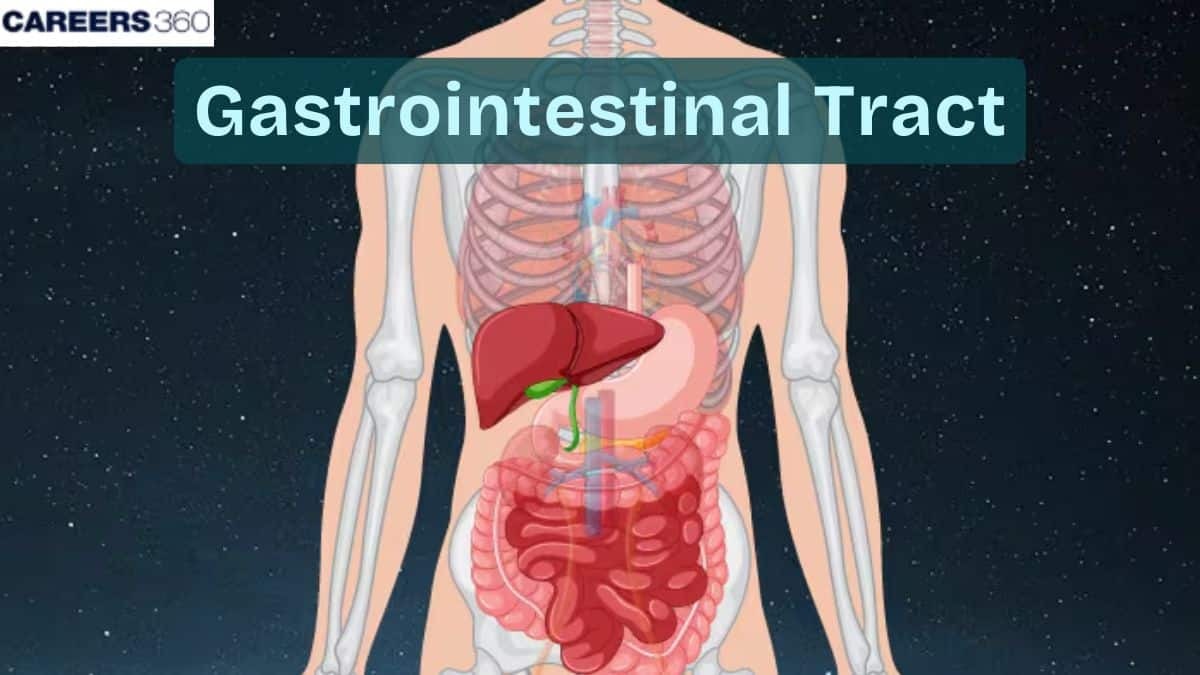
What is Gastrointestinal Tract?
The gastrointestinal tract is a long alimentary canal with a length of about 20 to 25 feet, which comprises a row of organs starting from mouth to anus including the mouth, oesophagus, stomach, small intestine and large intestine. The digestion starts from the mouth and continues in the stomach and small intestine through enzymatic and acidic digestion of food into absorbable nutrients lastly in the large intestine, water and electrolytes are absorbed and solid waste is obtained.
Anatomy of the Gastrointestinal Tract
The major components of the gastrointestinal tract are:
Mouth
Structure:
Made up of the oral cavity, which comprises lips, teeth, tongue and palate.
Functions:
Point of intake of foods and initiates the process of digestion.
Role of Saliva and Salivary Glands:
Saliva from the salivary glands (parotid, submandibular, and sublingual).
Contains amylase which initiates the digestion of carbohydrates
Aids in the moistening of foods for easier swallowing.
Esophagus
Structure:
A muscular tube which connects the mouth to the stomach.
Functions:
Helps in swallowing through the process of peristalsis.
Peristalsis:
Swallowing is a process of moving food through the oesophagus and into the stomach through well-coordinated muscular contractions in the form of waves.
Stomach
Anatomy:
J-shaped organ
Regions include cardia, fundus, body, and pylorus
Lined by the gastric mucosa.
Functions:
Mixes food with gastric juice.
Churns and breaks it down into a paste-like substance called chyme.
Role of Gastric Juices and Enzymes:
Proteins are acted upon by enzymes such as hydrochloric acid and pepsin and digestion occurs in an acidic medium.
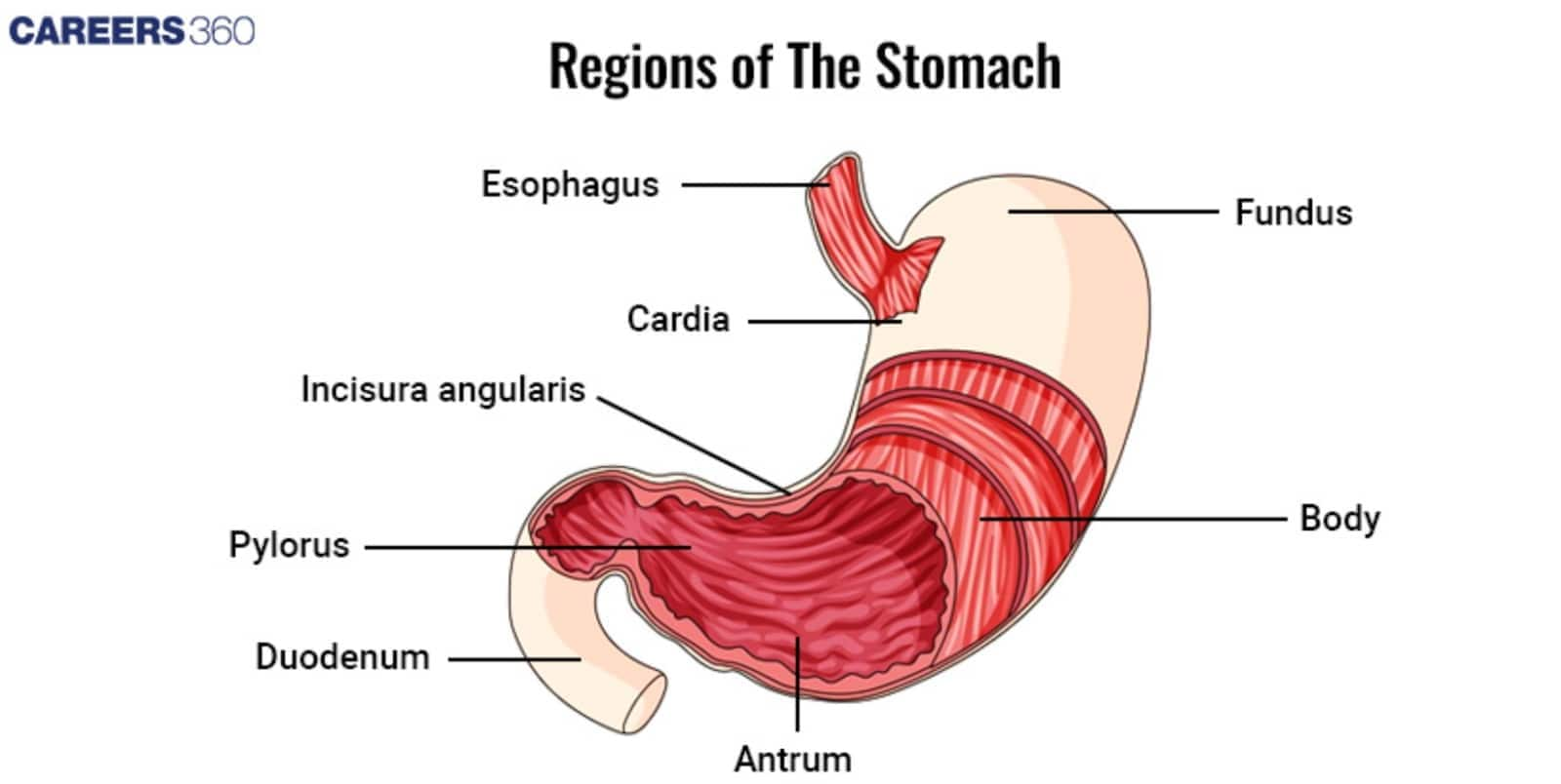
Small Intestine
Parts:
Duodenum
Jejunum
Ileum
Functions:
Major site of digestion and absorption
Role of Villi and Microvilli:
Increase area for the absorption of nutrients at the epithelial layer.
Facilitates nutrient absorption into blood.
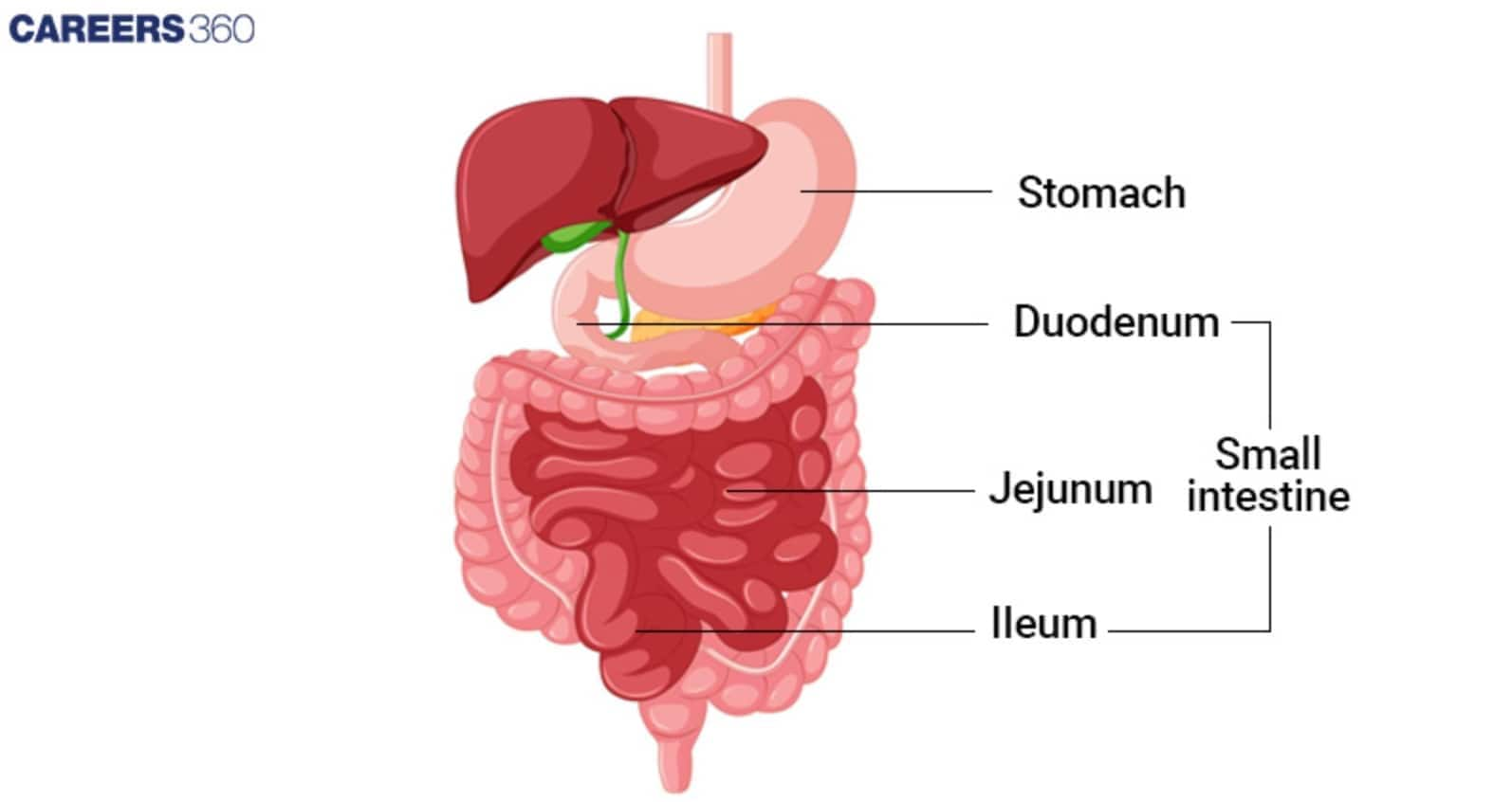
Large Intestine
Parts:
Cecum
Colon
Rectum
Functions:
Absorption of water and electrolytes.
Formation of faeces.
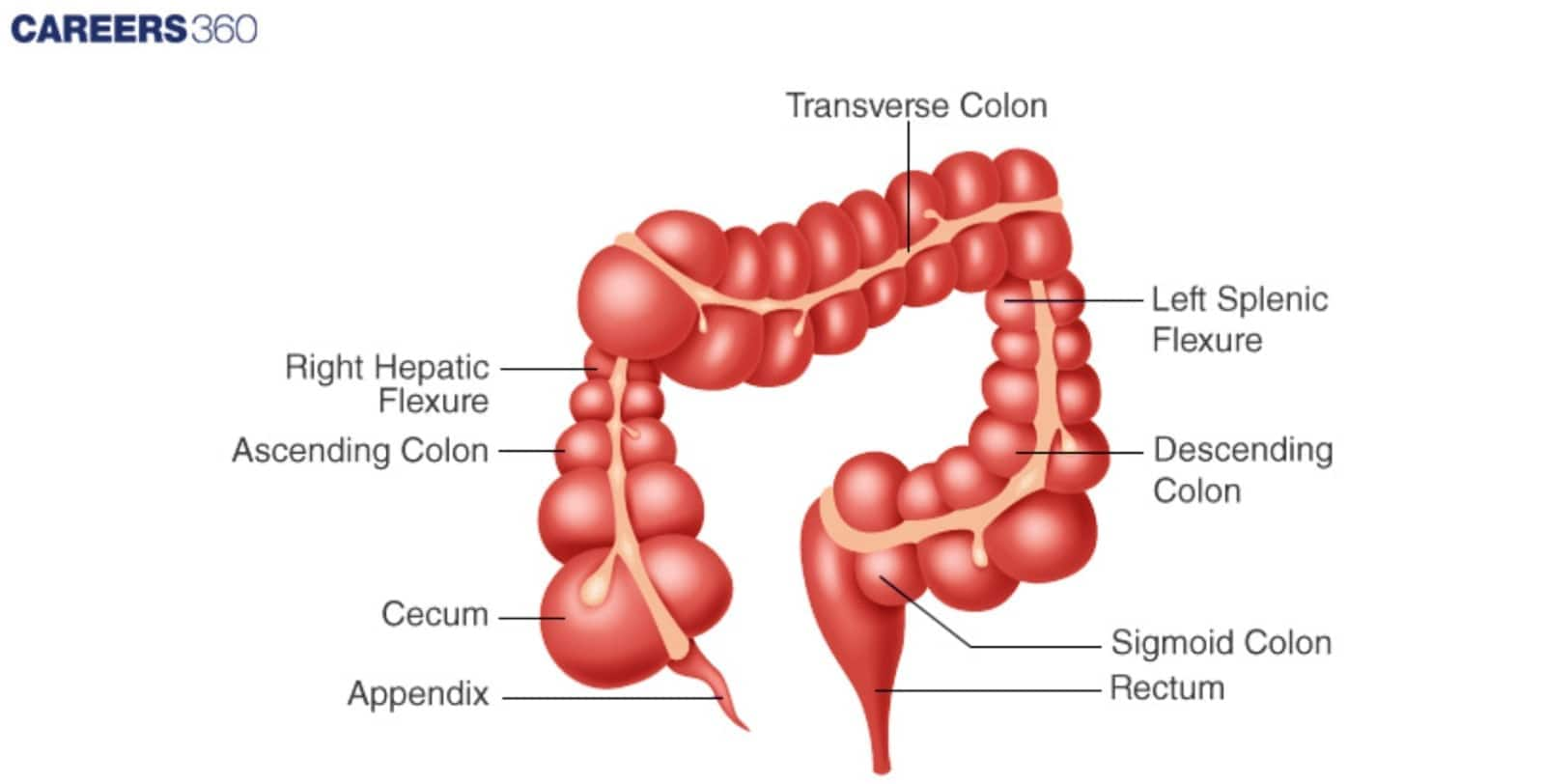
Accessory Digestive Glands
Accessory digestive glands are discussed below:
Liver
Largest gland
Functions: Destruction of toxins, bile production, and digestion of vitamins and fats.
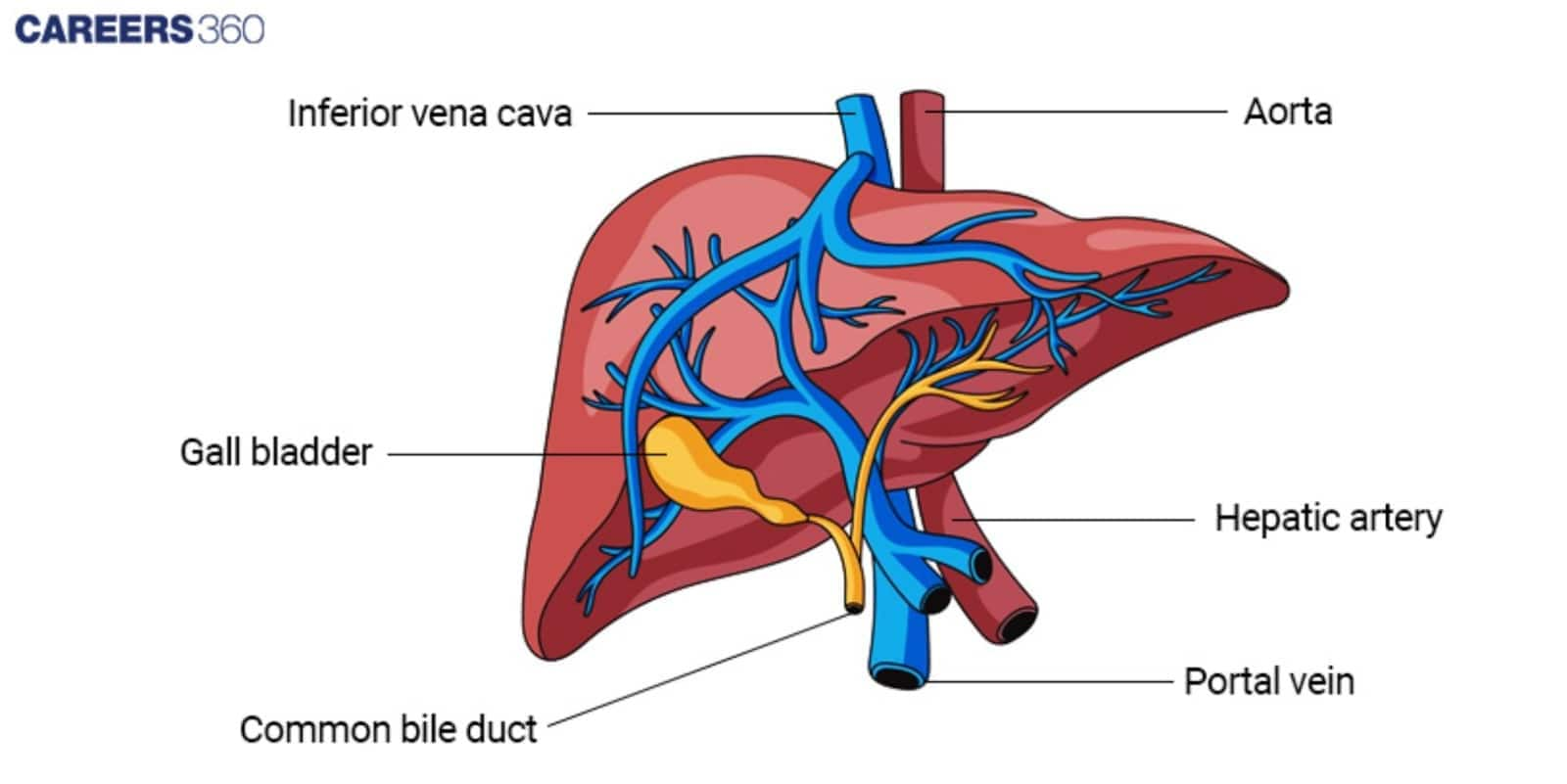
Pancreas
An elongated organ located below the stomach.
Produces insulin for sugar control.
Secretes substances for the small intestine example digestive enzymes.
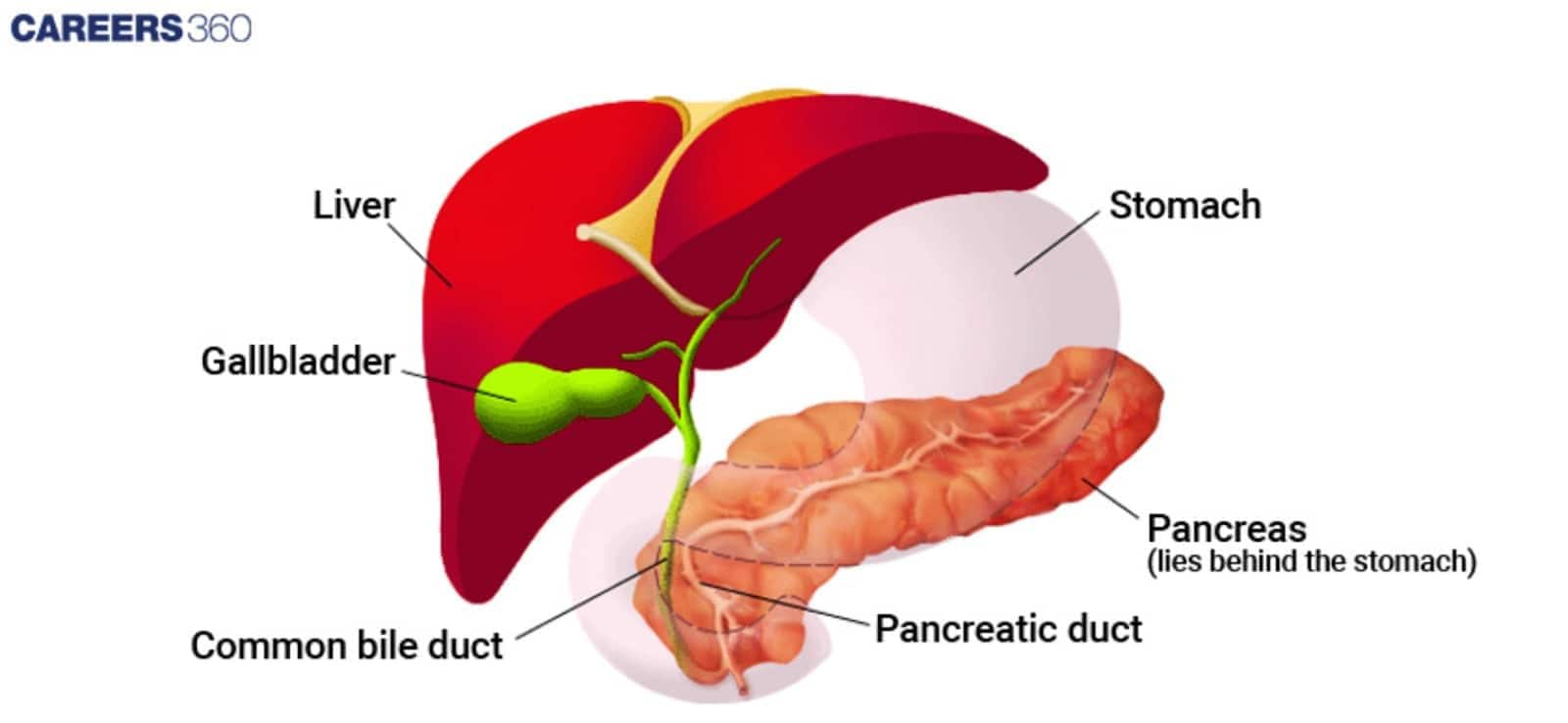
Gallbladder
A small pouch beneath liver
Stores and concentrates the produced bile.
Reaches the small intestine where it is of use in digestion and absorption of fats by regurgitating bile.
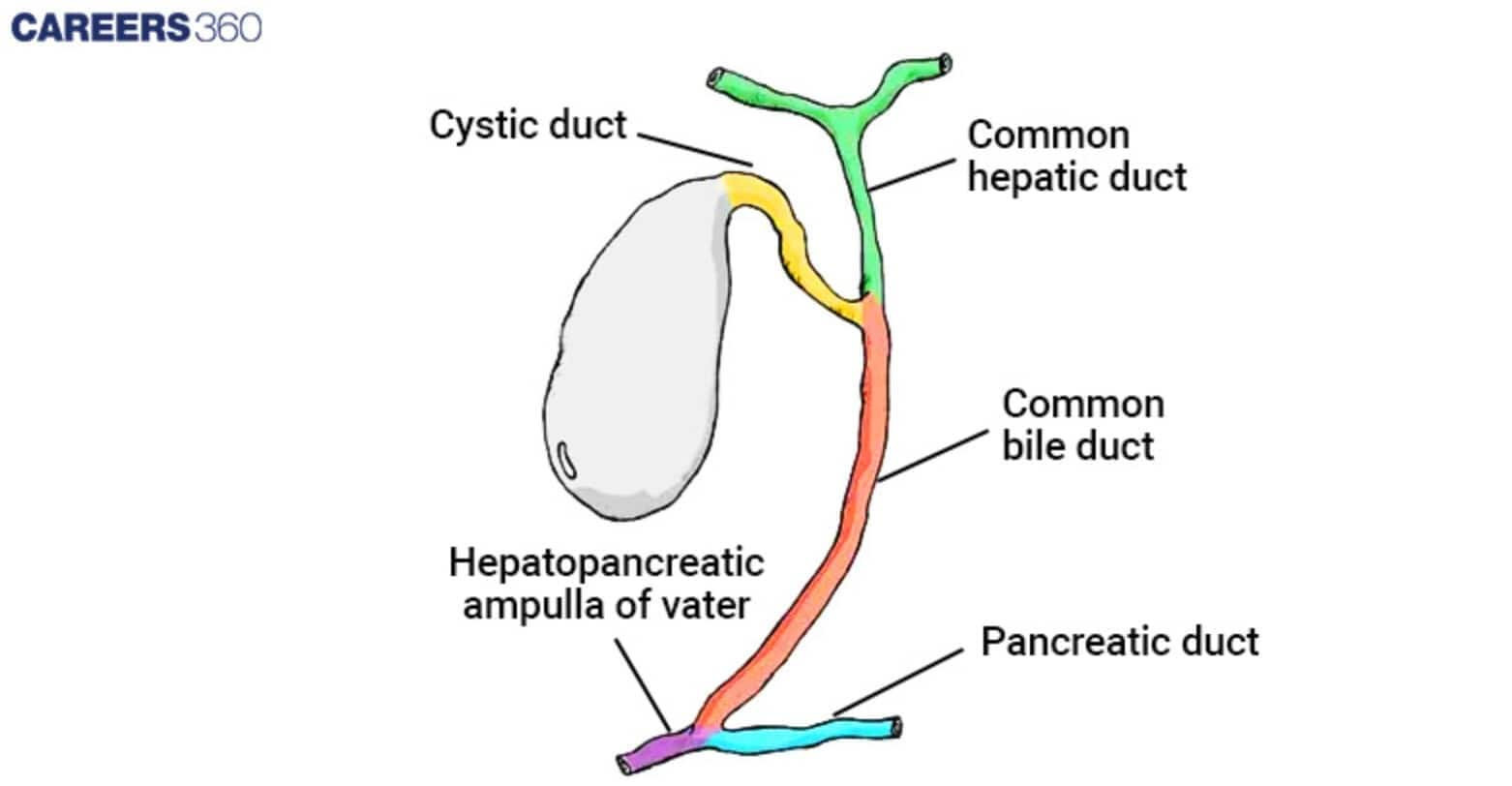
Common Disorders of the Gastrointestinal Tract
Some common disorders related to the gastrointestinal tract are:
Constipation
Causes: Low-fiber diet, not drinking enough water, physically inactive, or because of a certain medication or disease.
Symptoms: Constipation, difficulty in bowel movements.
Treatments: Diet rich in fibre, increase fluid intake and exercising, medication such as laxatives or stool softeners may be prescribed.
Irritable Bowel Syndrome (IBS)
Causes: Gut-brain signalling problem, stress, and diet.
Symptoms: Abdominal discomfort, pain, and or changes in bowel practices like diarrhoea constipation or both.
Treatments: Dietary interventions (for example, low FODMAP diet), stress reduction strategies, and medications for symptom relief.
Colon cancer
Causes: Age, family history of colon cancer, diet rich in red or processed meats, smoking, and conditions like Crohn’s disease, and ulcerative colitis.
Symptoms: Changes in bowel habits, the presence of blood in stools, pain in the abdomen and unexplained weight loss.
Treatments: Therapies frequently include surgery, chemotherapy, and/or radiation therapy based on the stage of the malignancy.
Haemorrhoids
Causes: Excessive pressure on the rectal as well as anal veins, pregnancy or sitting down for long periods.
Symptoms: Itching, pain, swelling around the anus and even bleeding when one is defecating.
Treatments: Dietary changes such as increasing fibre intake, use of creams and in the worst-case scenarios, surgery like hemorrhoidectomy.
Liver Disorders (Related to GI System)
Hepatitis: Inflammation of the liver resulting from viral infections of the liver (hepatitis A, B, C), alcoholism, or other ailments.
Cirrhosis: A state of the liver in which liver tissues are gradually replaced with fibrous tissues and the function of the organ starts to deteriorate.
Liver Cancer: It develops mostly from conditions like cirrhosis or hepatitis.
Preventive Measures and Healthy Practices
Some of the preventive measure and healthy practices includes:
Importance of a Balanced Diet
Source of essential nutrients, provides energy, and maintains digestive health.
Prevents digestive diseases.
Role of Fiber
Used to make the stool bulky
Relieve the individual from constipation and related complaints.
Regular Exercise
Helps in stimulation of bowel movements.
Helps in keeping your weight in check.
Hydration
Promotes the easing of bowel movement and digestion
Prevents constipation.
Avoiding Harmful Substances
Avoid alcohol and tobacco.
Reduces GI diseases and cancers.
Gastrointestinal Tract NEET MCQs (With Answers & Explanations)
Important questions asked in NEET from this topic are:
Anatomy of GI Tract
Common disorder of GI Tract
Practice Questions for NEET
Q1. Which of the following controls secretion of bile from gall bladder?
Secretin
Gastrin
Somatostatin
Cholecystokinin
Correct answer: 4) Cholecystokinin
Explanation:
Secretin stimulates the pancreas to release alkaline bicarbonate solution into the duodenum to neutralise the acidic chyme.
Secretin acts in tandem with another hormone called Cholecystokinin. It not only stimulates the pancreas but also stimulates the gall bladder to release bile.
Gastrin is secreted by g cells in response to the presence of proteins etc. Gastrin stimulates the stomach to release hydrochloric acid.
Somatostatin stimulates the stomach to stop releasing hydrochloric acid when the need for maintaining an acidic environment in the stomach is over.
Hence, the correct answer is option 4) Cholecystokinin.
Q2. Which of the following hormones controls hyperacidity in the stomach?
Gastrin
Secretin
Somatostatin
Cholecystokinin
Correct answer: 3) Somatostatin
Explanation:
Somatostatin stimulates the stomach to stop releasing hydrochloric acid when the need for maintaining an acidic environment in the stomach is over.
Secretin stimulates the pancreas to release alkaline bicarbonate solution into the duodenum to neutralise the acidic chyme.
Secretin acts in tandem with another hormone called Cholecystokinin. It not only stimulates the pancreas but also stimulates the gall bladder to release bile.
Gastrin is secreted by g cells in response to the presence of proteins etc. Gastrin stimulates the stomach to release hydrochloric acid.
Hence, the correct answer is option 3) Somatostatin.
Q3. Which of the following stimulates the release of Hydrochloric acid in the stomach?
Secretion
Gastrin
Somatostatin
Both b & c
Correct answer: 2) Gastrin
Explanation:
Role of Hormones in Digestion – Secretin stimulates the pancreas to release an alkaline bicarbonate solution into the duodenum, neutralizing the acidic chyme from the stomach. Gastrin, secreted by G cells in response to proteins, triggers the stomach to release hydrochloric acid (HCl), aiding digestion. In contrast, somatostatin inhibits HCl secretion once the stomach has achieved the required acidic environment, helping regulate digestive processes and maintain balance.
Hence, the correct answer is option 2) Gastrin
Also Read:
Recommended Video on Gastrointestinal Tract
Frequently Asked Questions (FAQs)
The primary role of the GI tract is to perform processes such as digestion of ingested food substances as well as absorption of the needed nutrients into the system with the elimination of the wastes. Digests ingest food through mechanical and chemical digestion, transport nutrients necessary for the body’s function to the blood and eliminate undigested parts of the consumed food.
The stomach plays an essential role in digestion since it releases gastric juices that include hydrochloric acid & pepsin. These substances dissolve proteins and come up with a soft paste, known as chyme and this is eased in the small intestine for more digestion and absorption of nutrients.
The secretion of liver bile plays a role in the emulsification and digestion of fats. Their assignment is the digestion of complex carbohydrates, fats and proteins and to this end, the pancreas releases enzymes like amylase, lipase and proteases into the small intestine. Both organs are important in the proper digestion of foods and absorption of nutrients, or lack of it.
This includes constipation, irritable bowel syndrome ( IBS) colon cancer, haemorrhoids and hepatitis. Some of these conditions are capable of interfering with normal digestion processes and lead to some of the signs and symptoms like abdominal pain, alteration of bowel movement and discomfort.
So, a healthy gastrointestinal needs a proper diet, proper intake of water and juicer, necessary exercise and avoidance of hazardous substances including alcohol and Tobacco. They assist in proper digestion, avert constipation and decrease the odds of development of digestive problems.